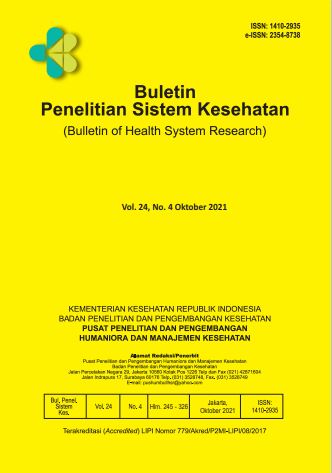Intervensi Kinesio Taping Dan Bobath Exercises Terhadap Peningkatan Keseimbangan Berdiri Dan Penurunan Spastisitas Tungkai Pasien Cerebral Palsy Di Sekolah Luar Biasa Dan Yayasan Pendidikan Anak Cacat Makassar
Abstract
Cerebal Palsy is a non progressive neuromuscular dysfunction in the form of muscle tone abnormalities which results in postural tone disorders in the form of spasticity, especially the legs, coordination disorders, sitting and standing balance, road disturbances that cause sufferers with daily functional impairment. The purpose of this study is to determine the effect of Kinesio taping and Bobath exercises for increasing the ability to balance standing and decrease the spasticity of the patient's limbs. This type of research is a pre-experiment with one group pre-test-post test design. Held at the Special School and the Makassar Disability Children Education Foundation from July to October 2019, with a sample of 49 cerebral palsy patients. Standing balance data were obtained using a Pediatric balance scale and limb spasticity data were obtained using the Asworth scale. Paired sample T Test Results obtained p value = 0.006 for spasticity and standing balance with p = 0.000 after being given Kinesio taping and bobath exercises. The conclusion of the study was that kinesio taping and bobath exercises had no significant effect on leg spasticity and there was a significant effect on the sitting balance of cerebral palsy patients. It is hoped that these two methods can be used in cerebral palsy patients who experience impaired sitting balance.
Abstrak
Cerebal Palsy adalah kelainan fungsi neuromuscular non progresif berupa abnormalitas tonus otot yang mengakibatkan gangguan tonus postural berupa spastisitas terutama tungkai, gangguan koordinasi, keseimbangan duduk dan berdiri, gangguan jalan yang menyebabkan penderita terganggu fungsionalnya sehari-hari. Tujuan penelitian ini mengetahui pengaruh Kinesio taping dan Bobath exercises terhadap peningkatan kemampuan keseimbangan berdiri dan penurunan spastisitas tungkai pasien. Jenis penelitian ini adalah pre - experiment dengan desain pretest – post test one group. Dilaksanakan di Sekolah luar Biasa dan Yayasan Pendidikan Anak Cacat Makassar mulai bulan JulisampaiOktober2019, dengan sampel penelitian sebanyak 49 pasien cerebral palsy. Data keseimbangan berdiri di peroleh menggunakan Pediatric balance scale dan data spastisitas tungkai diperoleh menggunakan skala asworth. Hasil Uji Paired sample T Test diperoleh nilai p = 0.006 untuk spastisitas dan keseimbangan berdiri dengan p = 0.000 setelah diberikan Kinesio taping dan bobath exercises. Kesimpulan penelitian bahwa kinesio taping dan bobath exercises tidak terdapat pengaruh yang signifikan pada spastititas tungkai dan terdapat pengaruh yang signifikan terhadap keseimbangan duduk pasien cerebral palsy. Dengan demikian diharapkan kedua metode ini dapat digunakan pada pasien cerebral palsy yang mengalami gangguan keseimbangan berdiri.
References
Advanced, Fullerton. 2016. “Advanced Balance Scale and Pbs in Cp.” 23(4): 63–70.
Ahmad Puzi, A. et al. 2017. “Modified Ashworth Scale (MAS) Model Based on Clinical Data Measurement towards Quantitative Evaluation of Upper Limb Spasticity.” IOP Conference Series: Materials Science and Engineering 260(1).
Arı, Gonca, and Mintaze Kerem Günel. 2017. “A Randomised Controlled Study to Investigate Effects of Bobath Based Trunk Control Training on Motor Function of Children with Spastic Bilateral Cerebral Palsy.” International Journal of Clinical Medicine 08(04): 205–15.
Badawy, Wanees M, Mohamed B Ibrahem, and Khaled M Shawky. 2015. “The Effects of Therapeutic Taping on Seated Postural Control in Children with Cerebral Palsy, Quadriplegia.” Medical Journal of Cairo University 83(2): 37–44. http://ez.library.latrobe.edu.au/login?url=http://search.proquest.com/docview/304517629?accountid=12001%5Cnhttp://ap01.alma.exlibrisgroup.com/view/uresolver/61LATROBE_INST/openurl?ctx_enc=info:ofi/enc:UTF-8&ctx_ver=Z39.88-2004&url_ctx_fmt=info:ofi/fmt:kev.
Besios, Thomas et al. 2018. “Effects of the Neurodevelopmental Treatment (NDT) on the Mobility of Children with Cerebral Palsy.” Open Journal of Therapy and Rehabilitation 06(04): 95–103.
Condliffe, E. G., D. T. Jeffery, D. J. Emery, and M. A. Gorassini. 2016. “Spinal Inhibition and Motor Function in Adults with Spastic Cerebral Palsy.” Journal of Physiology 594(10): 2691–2705.
Fatih Tekin, Erdogan Kavlak∗, Ugur Cavlak and Filiz Altug. 2018. “Effectiveness of Neuro-Developmental Treatment (Bobath Concept) on Postural Control and Balance in Cerebral Palsied Children.” Journal of Back and Musculoskeletal Rehabilitation 31(2): 397–403.
Kashoo, Faizan Zaffar, and Mehrunnisha Ahmad. 2020. “Comment to ‘The Effects of Kinesio Taping of Lower Limbs on Functional Mobility, Spasticity, and Range of Motion of Children with Spastic Cerebral Palsy’ by Mirjavad Tabatabaee et Al.” Egyptian Journal of Neurology, Psychiatry and Neurosurgery 56(1): 4–9.
Kaya Kara, Ozgun et al. 2015. “The Effects of Kinesio Taping on Body Functions and Activity in Unilateral Spastic Cerebral Palsy: A Single-Blind Randomized Controlled Trial.” Developmental Medicine and Child Neurology 57(1): 81–88.
Labaf, Sina et al. 2015. “Effects of Neurodevelopmental Therapy on Gross Motor Function in Children with Cerebral Palsy.” Iranian Journal of Child Neurology 9(2): 36–41.
Natsir, Selvi, Mita Noviana, and Dwi Rustyanto. 2017. “Pengaruh Kinesio Taping Dan.” 18(46): 379–84.
Park, Eun Young, and Won Ho Kim. 2017. “Effect of Neurodevelopmental Treatment-Based Physical Therapy on the Change of Muscle Strength, Spasticity, and Gross Motor Function in Children with Spastic Cerebral Palsy.” Journal of Physical Therapy Science 29(6): 966–69.
Partoazar, Bahar, Behnaz Ganji, Hamid Dalvand, and Alireza Shamsoddini. 2021. “The Effect of Trunk Kinesio Taping on Static and Dynamic Balance and Functional Mobility in Children with Cerebral Palsy.” Sport Sciences for Health 17(1): 111–17. https://doi.org/10.1007/s11332-020-00660-4.
Roy, Sujoy. 2019. “The Effect of Neuromuscular Taping in Improving Upper Extremity Functions in Children with Cerebral Palsy.” Journal of Medical Science And clinical Research 7(1): 562–67.
Selekta, Mayang Cendikia. 2018. “Cerebral Palsy Tipe Spastik Quadriplegi Pada Anak Usia 5 Tahun.” Majority 7(3): 186–90. https://juke.kedokteran.unila.ac.id/index.php/majority/article/download/2074/2042.
Shamsoddini, Alireza et al. 2016. “The Impact of Kinesio Taping Technique on Children with Cerebral Palsy.” Iranian journal of neurology 15(4): 219–27. http://www.ncbi.nlm.nih.gov/pubmed/28435631%0Ahttp://www.pubmedcentral.nih.gov/articlerender.fcgi?artid=PMC5392196.
Shamsoddini, et al ( 2016 ). 2015. “The Effects of Therapeutic Taping on Seated Postural Control in Children with Cerebral Palsy, Quadriplegia.” Medical Journal of Cairo University 83(2): 37–44. http://ez.library.latrobe.edu.au/login?url=http://search.proquest.com/docview/304517629?accountid=12001%5Cnhttp://ap01.alma.exlibrisgroup.com/view/uresolver/61LATROBE_INST/openurl?ctx_enc=info:ofi/enc:UTF-8&ctx_ver=Z39.88-2004&url_ctx_fmt=info:ofi/fmt:kev.
Suwandi, Suwandi, and Ayu Rafiony. 2018. “Hubungan Status Gizi (Tb/U) Terhadap Perkembangan Motorik Kasar Pada Anak Usia 1-3 Tahun Di Wilayah Kerja Puskesmas Korpri Kabupaten Kubu Raya.” Pontianak Nutrition Journal (PNJ) 1(1): 19.
Triandari, Listya et al. 2018. “Kombinasi Perceptual Motor Program Dan Neurodevelopmental Treatment Lebih Baik Daripada Treatment Dalam Meningkatkan Kemampuan Duduk the Combination of Perceptual Motor Program and Neurodevelopmental Treatment Was Better Than the Combination of Kinesiotap.” Sport and Fitness Journal 6(2): 31–37.
Trisnowiyanto, Bambang, and Tri Budi Santoso. 2020. “Correction Posture Tapping Meningkatkan Kemampuan Gerak Fungsional Anak Cerebral Palsy.” Jurnal Keterapian Fisik 5(2): 132–38.
Trisnowiyanto, Bambang, and M Mudatsir Syatibi. 2020. “Differences Influence of Aquatic Therapy and Neuro Developmental Treatment on the Motor Functional Development Ability of Children With Cerebral Palsy.” Jurnal Keperawatan Dan Fisioterapi (Jkf) 2(2): 165–71.
Unger, Marianne et al. 2018. “The Efficacy of Kinesiology Taping for Improving Gross Motor Function in Children with Cerebral Palsy: A Systematic Review.” South African Journal of Physiotherapy 74(1): 1–8.
Wulandari, Rizky, I Weta, and Moh. Ali Imron. 2016. “Penambahan Latihan Hidroterapi Pada Terapi Bobath Lebih Meningkatkan Kecepatan Berjalan Pada Cerebral Palsy Spastik Diplegi.” Sport and Fitness Journal 4(1): 25–36.
Zulyus, Ayu Brillianita, and Miranti Yolanda Anggita. 2019. “Efektivitas Pemberian Trunk Exercise Pada Plantar Flexor Ankle Exercise Terhadap Kemampuan Berjalan Anak Cerebral Palsy Diplegi.”


















